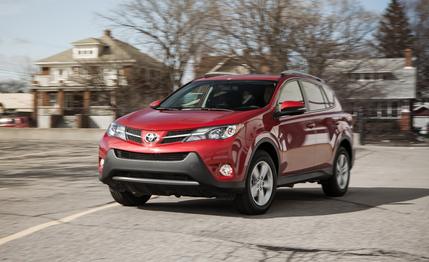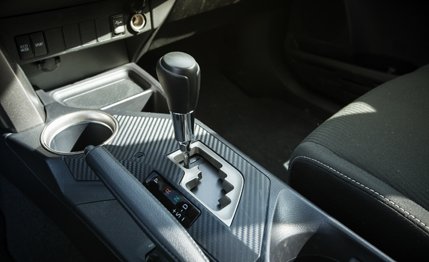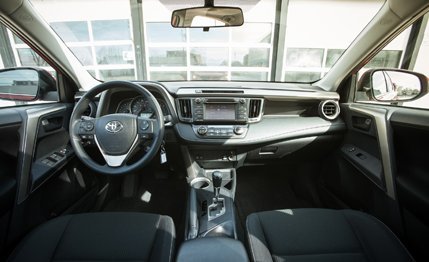
 Instrumented Test
Instrumented Test


Never mind the Subaru 4x4 wagons, Jeep Cherokees, and Suzuki Samurais that paved the way, Toyota’s RAV4 is the seminal crossover. In the strangely popular cars-impersonating-trucks category, this is the model that has remained faithful to its roots through three design renovations. The attack of interlopers and the recent economic downturn knocked the RAV off the top-seller’s perch, but it’s back this year with a full make over intended to hold a rising number of challengers at bay.
The fourth-gen RAV4 is nearly identical in size to its immediate predecessor, so the major changes pertain to its general layout and driveline configurations. The burly 3.5-liter V-6 engine is history; it arrived with the third generation and was instrumental in the RAV4 winning two of our comparison tests (once in 2008 and again in 2010). A port-injected 2.5-liter four-cylinder now is the sole power source, aided by a new six-speed automatic transmission. (Last year the base four-cylinder was paired with a four-speed automatic. A RAV4 so configured finished fourth in a six-crossover comparo last fall.) Regrettably, no stick-shift option has been offered since the 2005 model year. Power-delivery options again include front-drive or on-demand four-wheel drive.


Proof Is in the Packaging
The previous three-row seating option is gone, a move that benefits front legroom and cargo room. But the most significant configuration upheaval is relocating the spare from the rear door to a well under the cargo compartment floor, a move long overdue. The silly right-hinged access portal becomes a safer, handier, more conventional top-hinged hatch. Also, a slight shuffle of trim levels replaces the outgoing base, Sport, and Limited hierarchy with LE, XLE, and Limited nameplates.
A longstanding RAV4 advantage is that it has one of the lowest rear-compartment load floors in the compact crossover class, easing the task of lifting heavy or bulky objects—pet kennels, bags of Quikrete, cinder blocks, etc.—into the cargo hold. We measured a 26-inch pavement-to-sill dimension for the RAV4, four inches lower than the Mazda CX-5 and Subaru’s new Forester. With the rear seat folded, the RAV4 will carry a 43x74-inch panel of building material laid flat (increased from last year’s 41x64-inch limit dimension). By leaving the hatch ajar and loading panels at an angle, it’s now possible to tote full 4x8-foot sheets, a task less feasible in the gen-three RAV4 with its swing-out cargo door. Another worthy improvement is a small amount of space for hiding valuables adjacent to the high-pressure spare under the cargo hold’s floor panel. Interior release levers fold the roomy back seat in 60-40 increments to provide a nearly flat load space when passengers aren’t the priority. When they do outrank freight, rear occupants will appreciate the adjustable backrest.


Incrementally Improved but Generally Uninvolving
In spite of the inexplicable loss of three horsepower, the extra cogs of the new automatic transmission give the RAV4 added vigor in acceleration tests. The run to sixty is 0.8-second quicker at 8.2 seconds and the quarter-mile sprint is half a second shorter at 16.5 seconds and 85 mph. Passing ability from 50 to 70 mph is also improved. We found tighter skidpad grip (0.78 g compared to 2012’s 0.75 g) and a slightly shorter stopping distance (168 feet versus last year’s 174 feet), most likely attributable to the change from truckish Bridgestone Duelers to stickier Dunlop Grandtrek all-season tires on the 2013 test car. The 16-inch wheels used previously with base LE trim are gone and 17s now are included with LE and XLE versions. The top Limited trim rolls on 18-inch aluminum wheels. Ride motions are firm and there’s determined control of body rock and roll, but the RAV4’s handling doesn’t prompt visions of track-day excursions.